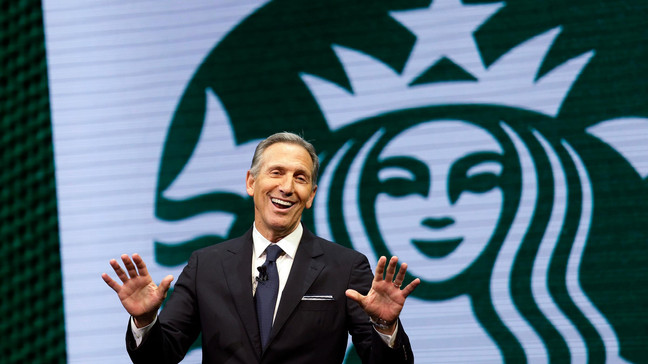Former Starbucks CEO Howard Schultz may have stepped down from his position several months ago, but his involvement with the coffee giant doesn’t seem to have ended. Schultz, who led Starbucks for about 25 years over three separate stints, recently offered critiques on the company’s current state, particularly its US operations. His insights come in the wake of Starbucks’ disappointing earnings, sparking discussions both inside and outside the company about its future direction.
Schultz’s Critique
In a post on his LinkedIn account, Howard Schultz highlighted that Starbucks’ US operations are the primary reason for the company’s recent struggles. He emphasized the need for a renewed focus on the customer experience within the stores themselves, suggesting that executives spend more time with cafe employees to understand their perspective. According to Schultz, the solution doesn’t solely lie in data analysis but rather in a “maniacal focus on the customer experience.”
He also pointed out the need to reinvent the mobile ordering and payment system, making it once again an uplifting experience. Schultz implied that Starbucks’ current offerings, including its new lineup of spicy drinks, may not be aligning with customer expectations. He stressed the importance of coffee-forward innovation to inspire both partners and customers and to maintain Starbucks’ premium position in the marketplace.
Schultz’s Departure and Legacy
Schultz’s departure from Starbucks’ board of directors in September, as part of a phased transition, marked the end of an era for the company. Despite no longer being actively involved in its operations, Schultz remains one of Starbucks’ largest shareholders, giving weight to his opinions on its future direction. His influence is particularly significant considering his role in choosing Starbucks’ current CEO, Laxman Narasimhan.
Current Challenges Facing Starbucks
Narasimhan reported a disappointing quarter in Starbucks’ recent second-quarter earnings, signaling a decline in same-store sales for the first time since 2020. The United States, Starbucks’ largest market, experienced a 3% drop in same-store sales, while China, its second-largest market, saw an alarming 11% decline. These setbacks have led to a significant drop in Starbucks’ stock price, down more than 20% for the year.
Narasimhan’s Plan for Recovery
In response to these challenges, Narasimhan outlined his plan to turn the business around. This includes updating the app and mobile payment offerings, improving service times, and introducing revamped menu items to attract customers back to Starbucks locations. The focus is on enhancing the overall customer experience while also adapting to changing consumer preferences and market dynamics.
Schultz’s Reflections and Optimism
Reflecting on his tenure at Starbucks, Schultz acknowledged experiencing some quarters of financial disappointment but emphasized the importance of contrition and renewed focus in such times. Despite the current challenges, Schultz expressed confidence in Starbucks’ resilience, noting that the company had created an industry that previously didn’t exist. He believes that with the right approach, Starbucks will recover, but it’s clear that business as usual is no longer viable.
Looking Forward
As Starbucks navigates its way through this challenging period, there are several key areas it must address to regain its momentum and position in the market.
Customer Experience in Stores
Schultz’s emphasis on the importance of the customer experience within Starbucks stores highlights the need for a return to the core principles that made the company successful. This involves ensuring that each visit to a Starbucks location is a positive and memorable experience for customers.
Innovation in Mobile Ordering and Payment
The mobile ordering and payment system has been a significant part of Starbucks’ success in recent years, but it appears to have lost some of its appeal. Reinventing this aspect of the business to once again provide an uplifting experience could help drive customer engagement and loyalty.
Product Innovation and Differentiation
Schultz’s call for “coffee-forward innovation” suggests a return to Starbucks’ roots as a coffee-centric company. Introducing new and exciting coffee offerings, alongside menu items that set Starbucks apart from its competitors, could reignite interest in the brand and attract customers back to its stores.
Employee Engagement and Training
Investing in employee training and engagement is crucial for delivering the level of service and quality that customers expect from Starbucks. By empowering its partners and fostering a positive work environment, Starbucks can ensure that its employees are motivated to deliver exceptional experiences to every customer.
Conclusion
Howard Schultz critique of Starbucks’ American business reflects a deep concern for the company’s future and a desire to see it return to its former glory. While his departure from the company’s board of directors may have signaled the end of his official involvement with Starbucks, his continued influence as a major shareholder ensures that his opinions carry weight. Starbucks faces significant challenges in the wake of disappointing earnings, but with a renewed focus on the customer experience, innovation, and employee engagement, the company has the potential to recover and thrive once again.







